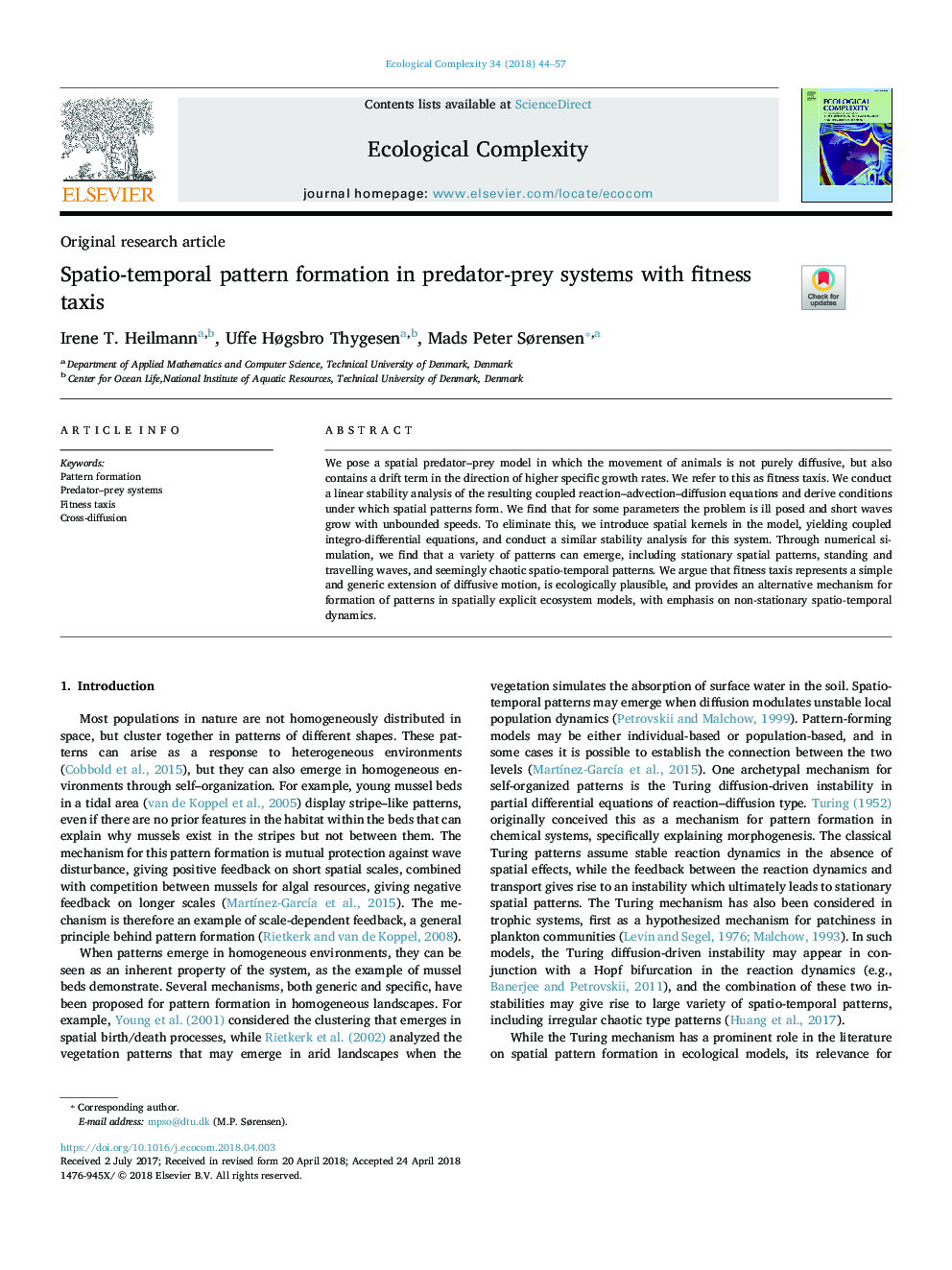| Article ID | Journal | Published Year | Pages | File Type |
|---|---|---|---|---|
| 8844815 | Ecological Complexity | 2018 | 14 Pages |
Abstract
We pose a spatial predator-prey model in which the movement of animals is not purely diffusive, but also contains a drift term in the direction of higher specific growth rates. We refer to this as fitness taxis. We conduct a linear stability analysis of the resulting coupled reaction-advection-diffusion equations and derive conditions under which spatial patterns form. We find that for some parameters the problem is ill posed and short waves grow with unbounded speeds. To eliminate this, we introduce spatial kernels in the model, yielding coupled integro-differential equations, and conduct a similar stability analysis for this system. Through numerical simulation, we find that a variety of patterns can emerge, including stationary spatial patterns, standing and travelling waves, and seemingly chaotic spatio-temporal patterns. We argue that fitness taxis represents a simple and generic extension of diffusive motion, is ecologically plausible, and provides an alternative mechanism for formation of patterns in spatially explicit ecosystem models, with emphasis on non-stationary spatio-temporal dynamics.
Related Topics
Life Sciences
Agricultural and Biological Sciences
Ecology, Evolution, Behavior and Systematics
Authors
Irene T. Heilmann, Uffe Høgsbro Thygesen, Mads Peter Sørensen,
